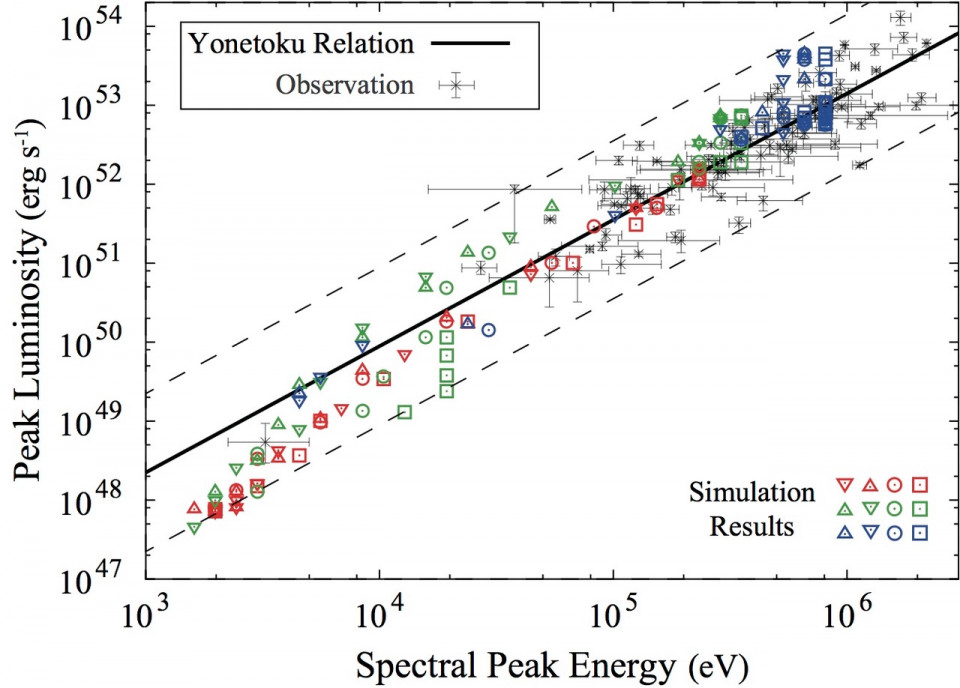Papers soon-to-be published in Nature Communications
A recent paper authored by several iTHEMS members has been accepted for publication in Nature Communications. The authors from iTHEMS include Hirotaka Ito (ABBL /iTHEMS), Shigehiro Nagataki (ABBL/iTHEMS) and Don Warren (iTHEMS). Congratulations! There will be a press release. Here is the explanation on the article by Hirataka Ito:
"The photospheric origin of the Yonetoku relation in gamma-ray bursts” by Hirotaka Ito, Jin Matsumoto, Shigehiro Nagataki, Donald C. Warren, Maxim V. Barkov & Daisuke Yonetoku Accepted for publication in Nature Communications. arXiv:1806.00590
Gamma-ray bursts (GRBs), an intense flash of gamma-rays that is observed almost every day, are the brightest event in the Universe. Decades of studies have revealed that they are originating from a relativistic jet launched at the death of massive star. However, exactly how the gamma-rays are emitted from the jet is still veiled in mystery. One unresolved question is the origin of the correlation between the spectral peak energy and peak luminosity discovered in observations. This “Yonetoku relation” is the tightest correlation found in the properties of GRB emission, providing the best diagnostic for the emission mechanism.
In this study, we focused on the so-called “photospheric emission” model which is one of the leading models for the emission mechanism of GRBs. To test the validity of the model, global dynamics of relativistic jet and radiation transfer must be taken into account. To tackle this issue, we performed three-dimensional relativistic hydrodynamical simulations and radiation transfer calculations to evaluate photospheric emission from relativistic jet that is breaking out of massive star envelope. Our simulations revealed that the Yonetoku relation is reproduced as a natural consequence of the jet-stellar interactions. This result strongly suggests that photospheric emission is the emission mechanism of GRBs.




